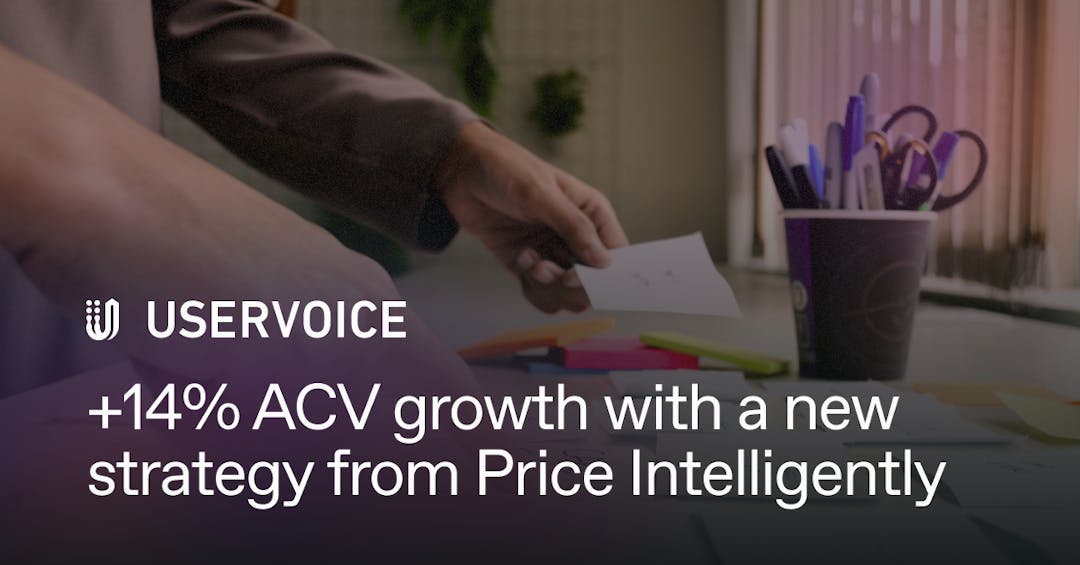The company
Pura created the world's first smart fragrance diffuser, a device that plugs into any outlet and can be fully controlled by an app. Pura has been described as “the biggest technology company in the history of fragrance” with a fragrance sold every 3.7 seconds in the US. Currently, their fragrances can be purchased either standalone or via a subscription.
“Fragrances are the center of our business so we really want to shift more people to the subscriber pool,” says Bryson Ross, Pura’s Director of Strategy.
“That means doing a lot of work figuring out what our customers value. Unlike software companies, we can’t just build out a new feature or roll out a new update to get customers to use our products, we have to ship the physical goods. We’ll sell significantly more product this year alone, so we need to be confident that any changes we make will be worthwhile.”
The challenge
While there had been pricing and monetization models set before Bryson arrived, there was a need for data and research on what price points and subscription incentives Pura should offer. Bryson says he and the team realized there was a big opportunity as the company moved into fast growth mode.
“Our pricing model wasn’t based on any data, it was a result of conversations when the company had just started. How we priced products was based on what felt right.”
Bryson realized there was an opportunity to do better.
“The business was growing very quickly at this point so we wanted to capture those opportunities quite fast. We began looking at how we could tweak our business model.
Our CEO had the idea of giving away a device combined with a subscription commitment, which would be a pretty big change for us. But we needed to figure out how to make this profitable too.”
Bryson wanted to explore how – through the incentive of a free device – Pura might be able to maximize customers’ lifetime value with a different pricing model.
We also wanted to look at the opportunity for bundles. Overall, we had to ensure we weren’t thinking in silos – we wanted to establish cross-price elasticities. In other words, we wanted to establish what the trade-offs are when we pull different levers. We then needed to tie that back to our own data and customer acquisition numbers, and establish whether everything makes sense in terms of the unit economics.”
The solution
Bryson knew what he wanted to achieve – and he also knew how to get there.
“I’d already had a great experience working with Price Intelligently at a previous workplace, so it felt like a natural choice for me.”
“I recognized that one of the hurdles I faced was cultural – if a business is doing well then people are scared to touch pricing. I knew Price Intelligently would give me the data I needed to convince them that it’s OK to play around with pricing.”
Within a month of starting at Pura, Bryson met with the Price Intelligently team.
What I really value about Price Intelligently is how responsive the team is – they are always digging in to make sure that we are actually getting the insights we need and learning from it. They are also really keen to dive into our subscriptions and work out what’s best for our overall business.”
Pura’s needs were specific and unique but thanks to the bespoke work from Price Intelligently, they quickly benefited from the insights.
Using Price Intelligently, Pura surveyed target customers to understand not only the most valued features of its products but also how much they’d be willing to pay for them.
“We discovered what people cared about most about our fragrances and will be making the necessary product changes,” Bryson says.
Bryson and his team used their findings alongside other market research data to develop a test approach to inform Pura’s future strategy.
“We ran a promotional campaign that would mirror what the future subscription would look like, and also tested the price changes on a smaller subset of our products to make sure everything worked out.”
The results
Within just six months, Pura decided on what price increases it was going to make, and what its new subscription model would look like.
“Later this year, we're going to roll out new products, along with enhancements to our fragrances. Because we’re changing our offering to what customers value most, there will be a higher willingness to pay.”
Using the data it has collected with Price Intelligently, Pura also reduced its discounts.
Bryson and his team will continue to use Price Intelligently to iterate its strategy going forward.
To them, Price Intelligently’s work has been crucial in steering Pura towards pricing success and continual growth.
“I use the outputs all the time. It’s really powerful to have data to direct our strategy and help determine which ideas to press ahead with. It has been instrumental to Pura moving the needle on a lot of our key metrics, and I don’t see that changing anytime soon.”
